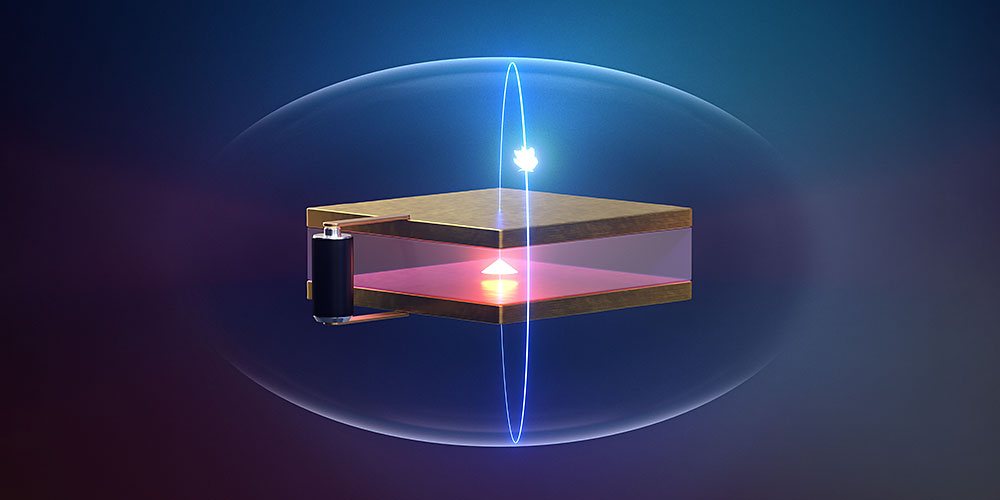
Researchers at University of Basel have succeeded in creating an efficient quantum-mechanical light-matter interface using a microscopic cavity. Within this cavity, a single photon is emitted and absorbed up to 10 times by an artificial atom. This opens up new prospects for quantum technology.
The researchers use artificial atoms, known as quantum dots. These semiconductor structures consist of an accumulation of tens of thousands of atoms, but behave much like a single atom: when they are optically excited, their energy state changes and they emit a photon.
For their experiment, the team positioned the quantum dot in a cavity with reflective walls. The curved mirrors reflect the emitted photon back and forth up to 10,000 times, causing an interaction between light and matter. Measurements show that a single photon is emitted and absorbed up to 10 times by the quantum dot. At the quantum level, the photon is transformed into a higher energy state of the artificial atom, at which point a new photon is created. And this happens very quickly, which is very desirable in terms of quantum technological applications: one cycle lasts just 200 picoseconds.
The successful experiment is particularly significant because there are no direct photon-photon interactions in nature. (University of Basel)
